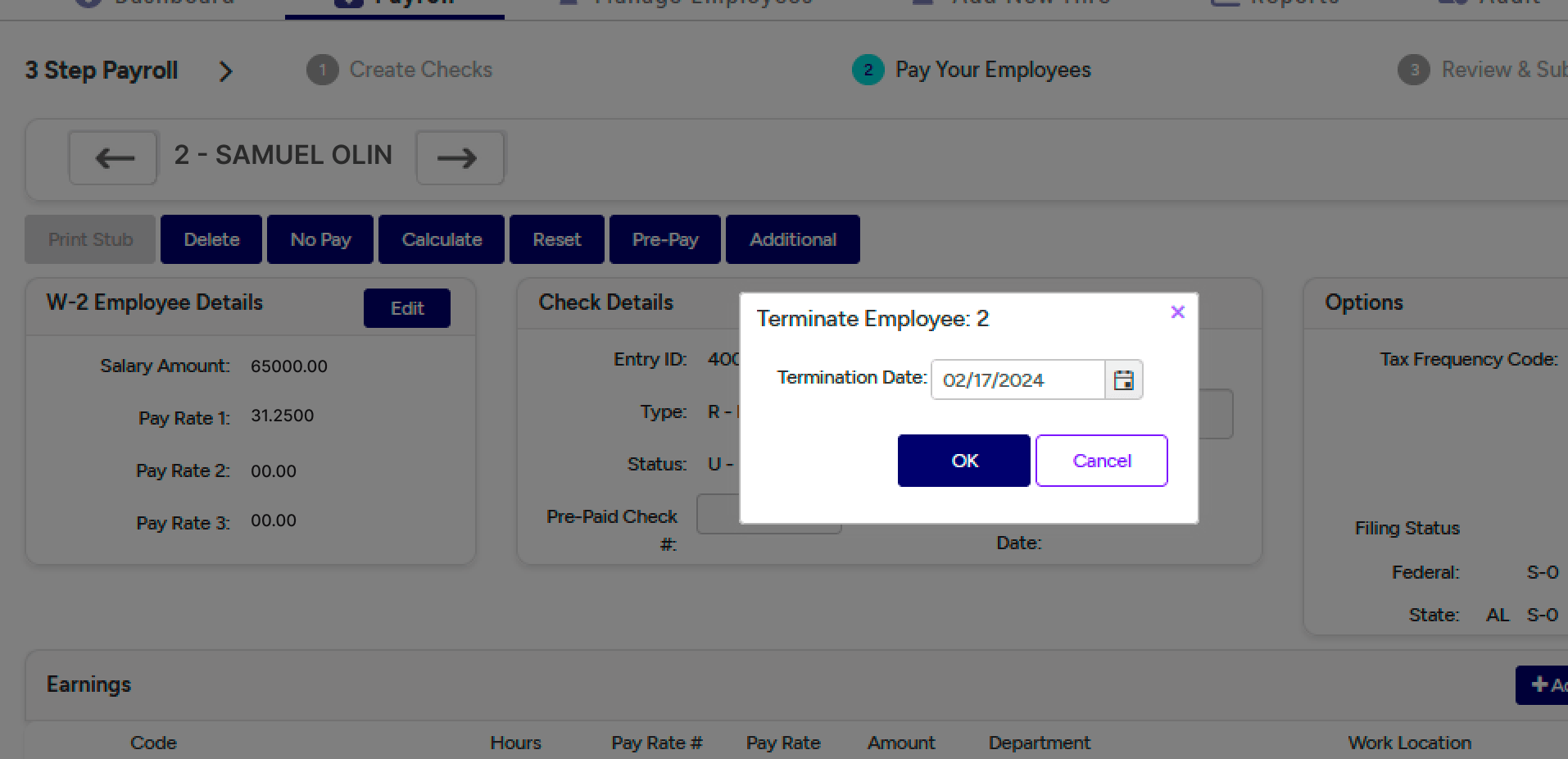Imagine your ideal scenario for employee offboarding. You know, the kind that drives long-term value and isn’t just a quick goodbye? It probably includes an extended notice period, a comprehensive checklist, thorough training for the incoming employee, and a pleasant exit interview.
Unfortunately, the above scenario happens about as often as the New York Jets win the Super Bowl––which is mostly never.
It’s more likely that you’ll need to act quickly to offboard employees and juggle communication efforts, which is why it’s critical to devise standard operating procedures for this stage in the employee lifecycle. Depending on whether the person resigned, retired, or was terminated, you’ll need thoughtful plans in place to safeguard company data, transfer knowledge, and gather helpful feedback.
Below are five steps for offboarding employees to help create long-term value for your company and people.
1. Prepare for the Employee’s Departure
Alexander Graham Bell famously said, “Preparation is the key to success.” While he (probably) wasn’t talking about offboarding, these words of wisdom still apply.
As you prepare for an employee’s departure, you’ll tackle various behind-the-scenes tasks such as reassessing the vacant position, notifying relevant teams, and coordinating with multiple departments. The result? Creating a foundation to facilitate a smooth transition.
Most of this action occurs within two weeks (the average notice period), but separation may occur immediately or take several months in certain situations.
Communicate the Departure
Like a Russian Nesting Doll, your offboarding plan will include numerous plans inside it. For example, you’ll need an internal communication plan to inform the team, department, or organization of the employee’s departure and clarify the transition of their responsibilities. Communication should be clear and rolled out systematically to cultivate trust and promote transparency. Failure to do so may foster office gossip and distrust in leadership.
However, the communication shouldn’t be limited to just your internal teams. An external communication plan is equally crucial if the departing employee holds a client-facing or high-profile position. These conversations involve:
- Appropriately notifying external parties
- Managing their expectations
- Ensuring a seamless transition without causing any disruption to the company’s services.
Handle the Transfer of Duties
Employee departures can be disruptive and emotional for everyone involved. Luckily, your offboard process can assuage various emotions – sadness of losing a teammate, worry of not hitting work goals, fear of a more extensive workload – before they cause a downturn in morale.
Therefore, HR and managers must work together to create an organized transition plan to keep workflow disruptions to a minimum, support new team structures, and signal to the departing employees that their work is valued.
To ensure a smooth transition, you must:
- Assess the departing employee’s workload and prioritize tasks. Doing so helps create a manageable 30-60-90 day plan for their successor. Alternatively, you may need to cut projects unrelated to company KPIs if you’re not backfilling the role.
- Reassign tasks to other team members or hire a replacement if necessary. Make sure you’re not bombarding team members with a mountain of new tasks, or there may be a series of new offboarding employees in your future.
- Establish a knowledge transfer process that provides access to required systems and files. Dorothy Leonard, Chief Adviser of the Leonard-Barton Group, says that knowledge transfer should be a top priority when the departing employee has “deep smarts – meaning business critical, experienced-based knowledge.” She says, “You’re not going to be able to clone the employee, but you can identify her behaviors, thought patterns, and processes that have made her such a valuable decision-maker.”
- Record handover guidelines in a document or video for reference. Ideally, you’ll already have standard operating procedures that simply need updating before an employee leaves. If that’s not the case, prioritize which guidelines are must-haves for documentation.
- Communicate the transition plan to all relevant team members. Beyond communicating to and equipping team members with the right information, plan to occasionally check in or use continuous performance management to ensure they’re on track and feel supported.
2. Conduct Thorough Exit Interviews
Exit interviews are usually an untapped source of honest employee feedback. In short, they allow departing employees to share experiences, pinpoint organizational weaknesses, and discuss their overall employee experience without fear of repercussion.
Determine Tactics and Techniques
Your company size, offboarding goals, and program management will all affect your interview methods.
You’ll most likely test which strategies work best for your team, but always consider the following:
- The format. Your interview format may be on a case-by-case basis, but most find in-person or virtual interviews most effective. If those options aren’t available, consider phone interviews or exit surveys to gather feedback.
- Who hosts the interviews. Notice that “interviews” is plural, as many companies hold multiple rounds of exit interviews to gather honest insights. If you schedule a post-departure interview, HBR recommends hiring an external consultant since the person “typically has several advantages over an internal interviewer, including expertise in exit interviewing and a complete lack of bias, so he or she is more likely to produce reliable data.”
- Which questions to ask. Open-ended questions are your best bet, as they allow departing employees to provide candid feedback and propose improvements freely. Your questions should facilitate a balanced discussion in which employees are prepared to discuss both positive and negative employment experiences.
Analyze and Act On Exit Interview Data
If you’re not a fan of puzzles, you may not like analyzing exit interview data. This step involves assessing individual responses to form a complete picture of the employee experience. However, it’s incredibly important, as you’ll use employee feedback to build an even stronger employee lifecycle and help retain top talent.
It’s best practice to use both qualitative and quantitative data to determine weaknesses and opportunities in your employee programming. As a reminder,
- Qualitative analysis identifies themes and patterns from open-ended responses facilitated through coding, categorization, or clustering methods.
- Quantitative analysis calculates statistics from numerical responses, effectively visualized using tools like spreadsheets, charts, or graphs.
Regular data reviews can unveil patterns and trends, exposing systemic issues within specific departments, management styles, or organizational policies.
Of course, understanding your metrics is one thing. Acting on it is another. Utilize this information to drive decisions and share it with stakeholders to foster accountability and facilitate strategic organizational change.
3. Revoke Access and Ensure Security
Seventy-six percent of IT leaders consider offboarding a critical security threat. That’s because many companies don’t do a thorough security sweep during offboarding, resulting in 89% of former employees retaining access to at least one login and password to a company application.
Team Hulu account? Not a big deal. Travel account with the company credit card? Bigger deal. Software with company-wide employee data? You get the picture.
Failure to properly revoke access during offboarding can result in significant security risks, compliance issues, and potential legal problems. To combat these issues, establish a checklist including internal company networks, external accounts, and software to which the employee had access to ensure comprehensive access revocation.
4. Finalize the Offboarding with Documentation and Payments
The fourth step may bring a sigh of relief to you and the departing employee. It entails documenting the completion of all offboarding tasks, drafting a comprehensive departing letter, and arranging final payments.
Your offboarding payments should comply with legal regulations to minimize legal risks associated with employee termination. For example, in California, you must pay the final paycheck on an employee’s last day of work or within 72 hours of the last shift (including all accrued and unused PTO).
You’ll also need to update the departing employee’s personal information for future documentation, such as tax forms, to uphold compliance and accuracy.

Confidently schedule an employee’s final pay check within your payroll software to maintain compliance and ensure proper payment.
5. Maintain Connections Post-Departure
The last step to your offboarding plan is ongoing: maintaining connections after employees leave. This communication is, of course, easier when former employees leave on good terms. Ideally, they’ll become brand ambassadors, refer candidates for open positions, and pitch the use of your product within their new role if applicable.
Furthermore, keeping in touch can turn former employees into potential rehires. That’s right – a study found that about 15% of hires are boomerang rehires and alum referrals at companies with solid alum programming. In this scenario, you’ll not only welcome back a former employee with “deep smarts” but also save on recruiting and onboarding costs.
Ideas for continuous communication include:
- Creating an alum community
- Reaching out via email
- Celebrating their successes on LinkedIn
- Inviting them to workshops or speaker series
- Send company newsletters featuring current and alum employees
For terminated employees, consider providing additional services to help them in their journey, including career coaching, referral programs, and resume assistance. Doing so will support their current situation and work toward amending any disgruntled feelings.
Revisit Your Offboarding Process Regularly
It’s important to note that a well-structured offboarding process isn’t just a series of tasks. Instead, it’s a living program that needs constant reassessment and improvement.
Review your offboarding strategy often to ensure you’re making the most of exit interviews and post-departure relations. In fact, HBR recommends that “the executive committee oversees the program’s design, execution, and results” and should discuss the topic at least annually.
Consistently prioritizing and improving your offboarding program benefits the departing team member and those remaining. By focusing on the last stage in the employee lifecycle, you’ll contribute to their final employee experience and solidify a lasting positive impression of your organization.









